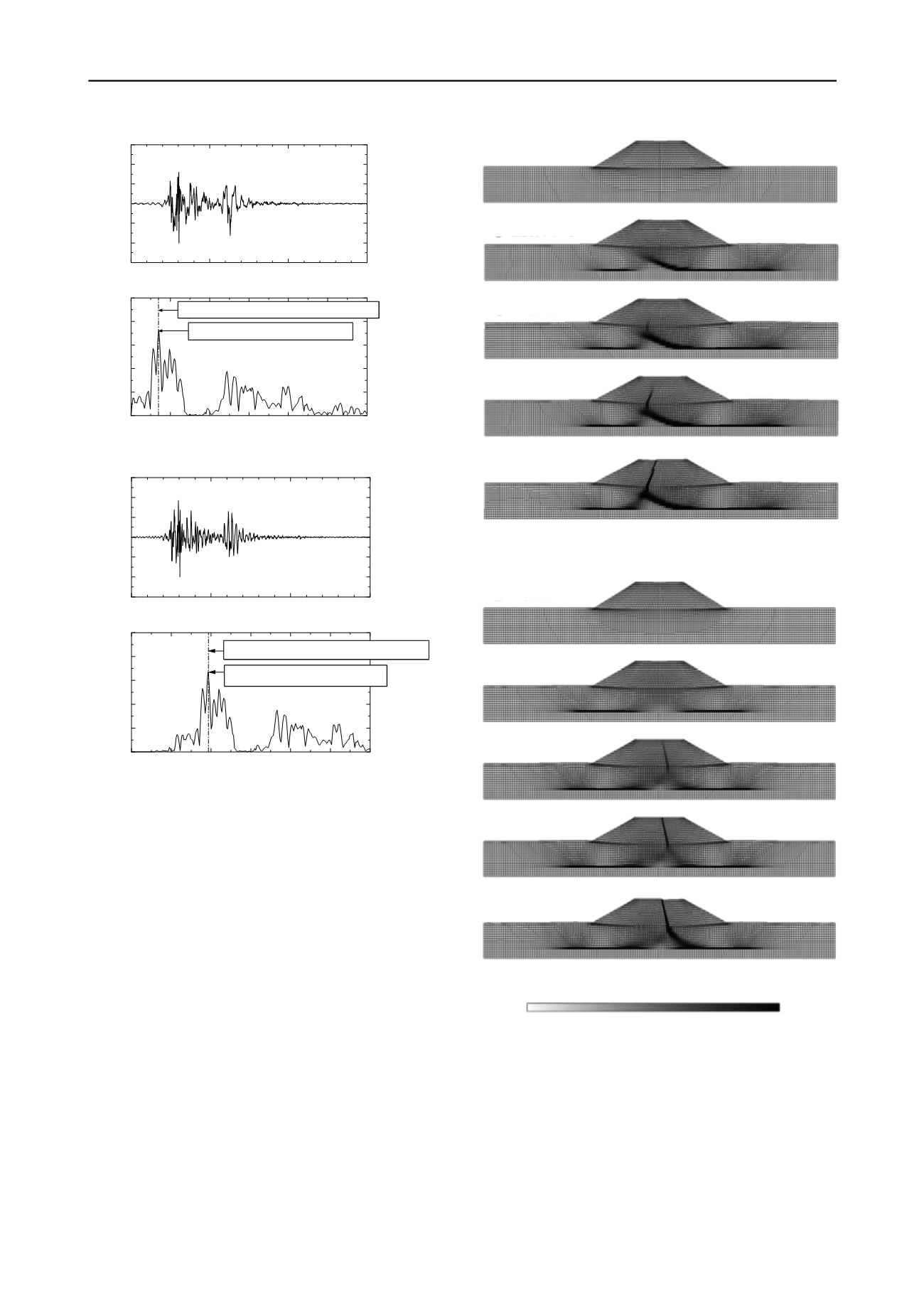
1601
Technical Committee 203 /
Comité technique 203
(a) WAVE 1
(b) WAVE 2
Figure 3. Acceleration wave form and Fourier amplitude spectrum of
input seismic waves
However, with the progress of time, a slip surface developed in
the embankment and subsequently expanded into the ground.
That is, we observed a significant difference in the delayed
failure behavior of the soil structure-ground system depending
on the dominant frequency of the seismic wave.
In order to elucidate the reason for this difference in the
progression of delayed failure, we first investigated the
differences in vibration characteristics during the earthquake in
the two cases. The Fourier amplitude spectrum of the
acceleration response for the layer boundary at the center of the
ground is presented in Figure 5. We see that in CASE 1, the
frequency component that was close to the dominant frequency
of WAVE 1 underwent substantial amplification at the top of
the clay layer as the seismic wave passed from the ground to the
embankment, and that this area experienced resonance
corresponding to MODE 1 (upper panel of Figure 2), which
caused large-scale deformation of the clay layer. In CASE 2, the
frequency component that was close to the dominant frequency
of WAVE 2 underwent substantial amplification at the crown of
the embankment and the embankment experienced resonance
corresponding to MODE 2 (lower panel of Figure 2) that caused
large-scale deformation of the embankment.
(a) CASE 1 (Slip surface develops from ground to embankment)
(b) CASE 2 (Slip surface develops from embankment to ground)
Figure 4. Shear strain distributions
Next, we investigated the mechanisms underlying the
delayed failures observed in our simulations. The distribution of
excess pore water pressure when the earthquake stopped is
presented in Figure 6. It can be seen that, in both cases, the
upper portion of the ground and inside the embankment
experienced a negative excess pore water pressure, while the
central to lower portions of the ground experienced positive
excess pore water pressure. Because the upper portion of the
ground and the embankment were in an overconsolidated state
prior to the earthquake, when subjected to undrained shear
0
10
20
30
-300
-200
-100
0
100
200
300
Time
t
(sec)
Acceleration
a
(cm/sec
2
)
0
1
2
3
4
5
6
0
2
4
6
8
10
Frequency
f
(Hz)
Fourier amplitude
spectrum (gal
・
sec)
Dominant frequency
:
0.708 Hz
Natural frequency of MODE 1 : 0.699 Hz
0
10
20
30
-300
-200
-100
0
100
200
300
Time
t
(sec)
Acceleration
a
(cm/sec
2
)
0
1
2
3
4
5
6
0
2
4
6
8
10
Frequency
f
(Hz)
Fourier amplitude
spectrum (gal
・
sec)
Dominant frequency
:
1.929 Hz
Natural frequency of MODE 2 : 1.935 Hz
1) Before earthquake
2) End of earthquake
3) 21h after earthquake
4) 60h after earthquake
5) 30yr after earthquake
1) Before earthquake
2) End of earthquake
3) 69h after earthquake
4) 70h after earthquake
5) 30yr after earthquake
0
5
10
15
20
ε
s
(%)


